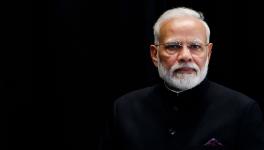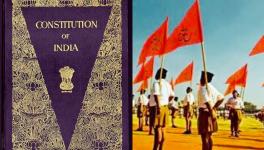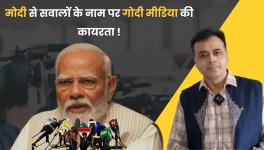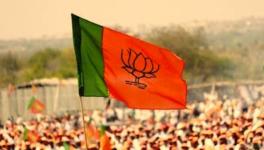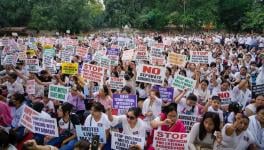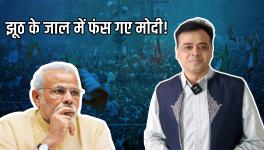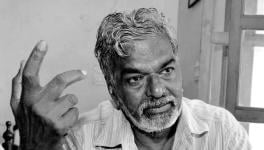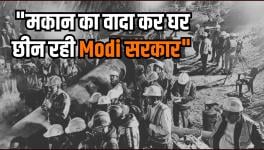‘Has the Constitution Failed us or Have we Failed the Constitution?’
Representational use only.
Bibek Debroy, Chairman of the Economic Advisory Council to the Prime Minister (EAC-PM), recently wrote a controversial opinion published by a prominent business newspaper on—of all days—Independence Day. He cites a University of Chicago Law School study, which says the “mean lifespan” of written constitutions across the world since 1789 is 17 years.
Based on this 2009 study, which is available online, Debroy concludes it is time India did away with its Constitution and brought in another to replace it. The Chicago Law School study never says rewriting or replacing written constitutions is the goal or ideal. Indeed, the study provides reasons why many written constitutions are “rather fragile organisms” and explains factors that could enhance their longevity. It finds three primary factors—inclusion, adaptability and specificity, which determine whether a written constitution faces an early death or gets a long life.
For example, says the study, “In terms of inclusion, public ratification produces more enduring constitutions in democracies, but not in autocracies.” In other words, the more participatory a constitutional process is, the longer the constitution will last. Second, the study says it is the citizens who ultimately can determine the lifespan of their country’s constitution. Further, the “collective enforcement of constitutional norms” works better in democracies than dictatorships.
Third, the ease or difficulty in amending a written constitution also matters to its longevity. And, constitutions that are broad in scope survive longer than shorter ones, provided the provisions are specific—not just wordy. Indeed, the study warns that constitutions written after 1945 are more vulnerable to dying, usually by rewriting or replacement.
The question then arises, why does Debroy think the Indian Constitution is now amenable to repeal or wholesale rewriting? After all, as the Chicago Law School study says, “over half of the world’s constitutions survive” even cataclysmic events such as war, internal violence, and coups. Does Debroy think India’s civil life is worse off than ever before? No—in fact, he seems to be under the influence of archaic and contradictory notions of what it means to be “Indian”. He claims India’s Constitution—which was deliberated threadbare in the Constituent Assembly consisting of Indian leaders and reformers—represents its colonial past. His specious evidence is that the Constitution is “largely based on the Government of India Act of 1935”.
Now turn to Debroy’s idea of what is Indian or indigenous. He writes that the Sengol, recently installed in the new Parliament building, represents reclaiming “forgotten [Indian] heritage”. What he does not mention is that the Sengol represents transfer of power from Britain to India only in Hindutva or pro-government circles. In the historical record, there is no evidence that the Sengol played any role in India’s independence. Besides, the Sengol represents religious authority trumping a secular Constitution.
Next, according to Debroy, the Constitution has been amended so many times since it came into force on 26 January 1950 that “we no longer possess the one we inherited”. Thereby, he contradicts his own claim that the Constitution is primarily a colonial-era relic.
The authors of the University of Chicago Law School study, Thomas Ginsburg, Zachary Elkins, and James Melton, inquire into the “internal characteristics” of written constitutions that could make them more resilient. They find those qualities are—constitutions written as part of an open process, those which are transparent and on a wide range of topics, and those reasonably open to amendments if conditions change.
Indeed, the authors see a written constitution with a pronounced element of flexibility as an advantage. They never support pushing a “fragile” constitution off the cliff, as Debroy seems bent upon. But why does he ignore the warnings and advice of the paper he cites, while latching on to its 17-year finding? Perhaps the answer lies in which aspects of the Constitution Debroy expresses the most discomfort with.
He writes that the amendments to the Constitution were “not always for the better”, specifically referring to the 1973 Kesavananda Bharati judgement of the Supreme Court, which propounded the basic structure doctrine that the Constitution “cannot be altered”. Debroy adds his own twist to this doctrine, suggesting that it undermines what “democracy desires through Parliament”. And what democracy desires, as he claims, is the Constitution must go!
Indeed, ruling party leaders such as former Union Law Minister Kiren Rijiju have been at loggerheads with the judiciary and claiming Parliament’s role and powers should be supreme, and even Vice-President Jagdeep Dhankhar, who criticised the Supreme Court for using the basic structure doctrine. Debroy joins this chorus, even providing the government an escape route—he writes that replacing the Constitution altogether would nullify the basic structure doctrine, thereby giving the executive untrammelled powers over citizens.
In a vaguely-worded sentence, Debroy hints that the Rajya Sabha needs to go since it contradicts “electoral reform”. He suggests the Directive Principles of State Policy are meaningless in the new normal, where the Indian State is only supposed to play second fiddle to “markets”. But Debroy is sharp enough to observe that “much of what we debate begins and ends with the Constitution”. Therefore, he suggests, India throws the baby out with the bathwater—end all debate by getting rid of this Constitution.
The irony about India in 2023 is that those who want to cancel the Constitution never highlight its flaws. Instead, they dislike its most exceptional features—for example, Debroy highlights his discomfort with the Preamble’s declaration that India is a sovereign “socialist, secular, democratic” republic committed to justice, liberty and equality of citizens.
His problem is not with the Constitution but its core ideals, which the Sangh Parivar, the Bharatiya Janata Party (BJP) and its supporters and ideologues have had bitter differences with since its inception in the 1950s. But Debroy’s arguments are more insidious. He implies that the very meaning of these words in the Preamble—socialist, secular, democratic, justice, equality—have changed. How, he does not specify, but he writes: “We should...start from first principles, asking what these mean now: socialist, secular, democratic, justice, liberty and equality.”
Obviously, all these words still mean what they did when India gained freedom, when the Constituent Assembly deliberated on the Constitution’s provisions, or when terms like secularism and socialism were introduced in later years to emphasise what India stands for.
After widespread outrage, the EAC-PM clarified Debroy’s views were his alone and not of the Indian government. But the fact remains that Union Minister Anant Kumar Hegde had also said in December 2017 that the BJP government intends to change the Constitution. According to him, people must not call themselves “secular” but identify themselves by religion or caste—Brahmin, Kayastha, Muslim, Christian, etc. Those who call themselves secular “do not have an identity of their parents and their blood”, he had said.
That statement had brought both Houses of Parliament to a standstill as Opposition parties took the stand that a minister who swore an oath of allegiance to the Constitution had no right to violate it and continue to enjoy the perks of power it gave him. The Congress called Hegde’s remarks a “direct assault” on India’s composite identity and charged the “BJP-RSS school of thought” with spreading bigotry, hate, divisiveness and prejudices.
Would Debroy agree that these charges apply to him as well, for despite his sophisticated words, he is assaulting the constitutional principles of equality, justice and secularism? Even in Hegde’s case, the government just issued a weak clarification in the Rajya Sabha through Minister of State for Parliamentary Affairs Vijay Goel, who said the government had “full faith” in the Constitution, no plans to change it and disagreed with Hegde’s remarks.
Prime minister Atal Bihari Vajpayee also toyed with “reviewing” the Constitution during his term from 1998-2000. At the time, the Vajpayee regime incorporated in President of India KR Narayanan’s address to Parliament the government’s proposal to review the Constitution. The Prime Minister’s Office always drafts that address, and it is beyond the scope or discretion of the President to alter it. Hence, Narayanan read out the text of the speech in Parliament, including the government’s intent to review the Constitution.
However, on the golden jubilee of the Republic, Narayanan, in his speech delivered in the Central Hall of Parliament, referred to the repeated demands to revise or rewrite the Constitution and said, “We have to consider whether it is the Constitution that has failed us or whether it is we who have failed the Constitution.”
Those words spread like wildfire, and people throughout the country supported the President and opposed the Vajpayee government’s project to revise the Constitution. In a significant comedown, instead of appointing a “commission” to review the constitution, the government set up a Commission to Review the Working of the Constitution. President Narayanan stopped the Vajpayee government in its tracks. Today, Debroy and others represent a renewed attack on the Constitution. Will President Droupadi Murmu follow her distinguished predecessor to rebuff this attempt, in tune with her oath to preserve, protect and defend the Constitution?
Debroy’s comments are an affront to the stalwarts like Rajendra Prasad, Jawaharlal Nehru, Dr BR Ambedkar and the host of luminaries who debated and framed a Constitution that has survived numerous cataclysms and challenges. Those who occupy high positions in government must uphold this document and the legislative intent of the Constituent Assembly. Anything else would put the idea of India and our unity and integrity at stake.
The author served as Officer on Special Duty to President of India K R Narayanan. The views are personal.
Get the latest reports & analysis with people's perspective on Protests, movements & deep analytical videos, discussions of the current affairs in your Telegram app. Subscribe to NewsClick's Telegram channel & get Real-Time updates on stories, as they get published on our website.









